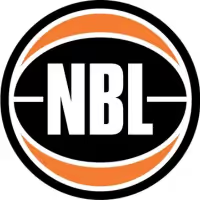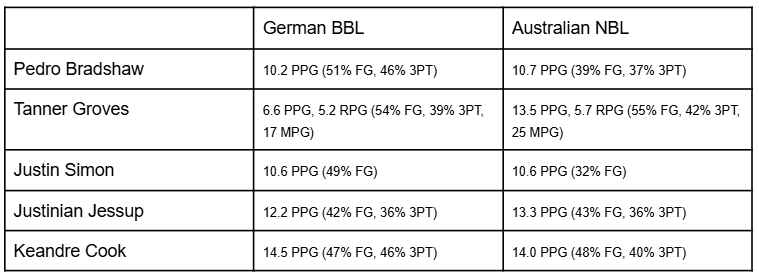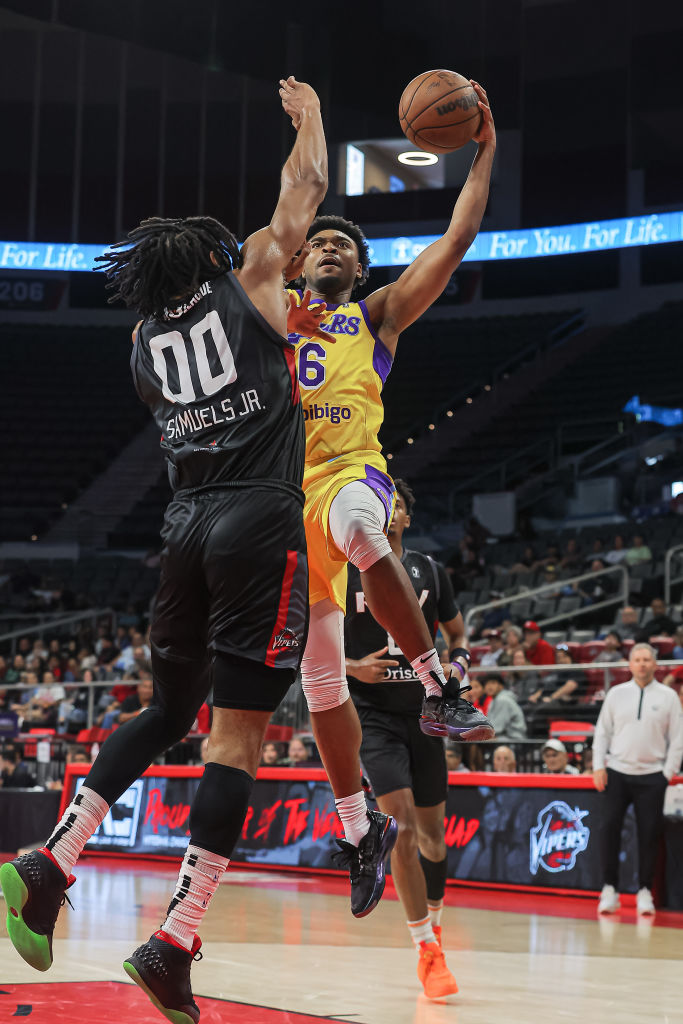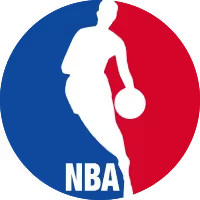

11
Aug
Analysis
Import Report: Bucket-getter Bryce is nice
Milton Doyle took the JackJumpers to a history-making championship but is a new import a better fit?
- The Tasmania JackJumpers have signed Bryce Hamilton, Tyger Campbell and David Johnson as their import trio for NBL26
- Hamilton played his college basketball at UNLV before stints in the G League, in Germany and Greece
- Michael Houben analysed the signing of JaVale McGee for the Illawarra Hawks in his first Import Report
For a team that finished last offensively last season, the Tasmania JackJumpers have found themselves a true bucket getter in Bryce Hamilton.
Hamilton was the German league's third top scorer last season with more than half of his offence last year coming from the pick and roll or isolation — he's exceptional at creating something out of nothing.
While he's certainly every bit the creator that Milton Doyle was, don't expect him to be distributing as much as Doyle did in his three seasons as a Taswegian. Hamilton is focused on scoring first. Although, he can dominate the ball, he has shown the ability to play off the ball, too. His ability to spot up and play in transition will allow him to co-exist with some of Tasmania's new pieces — including Tyger Campbell, David Johnson and Josh Bannan.
Import Report: Bryce Hamilton
In the Tasmanian JackJumpers short four season history, the team’s largely successful campaign to ‘Defend the Island’ has been predicated on just that — defence.
It’s a focus that at its best led to a championship in 2024, after the team led the league in defensive rating, but thanks to the firepower of Jack McVeigh and a second-year Milton Doyle, they were able to keep the offence ticking over too.
It’s a balance that Scott Roth failed to maintain last season, and the team struggled as a result. While the team continued to be good, if not elite, defensively, it was scoring down the other end that failed them, exceedingly the worst offensive team in the league; their 107.2 offensive rating was nearly four points worse than second last (the 8-21 Cairns Taipans).
Without losing their defensive identity, firepower was their ultimate priority on the shopping list this off-season. Their number one purchase? Bryce Hamilton.

Following the trend of import signings this off-season, Hamilton is young at only 24-years-old. Despite this, he fortunately has a body of work that already spans multiple environments including college, the NBA G League and Europe to instil confidence in his ability to produce at the NBL level.
The one common dominator at all of Hamilton’s stops? He’s a bucket getter.
In his senior season playing in the Mountain West Conference for UNLV, Hamilton averaged 21.8 points per game, good for sixth across all of college basketball.
In the G League, Hamilton played alongside Jack White at the South Bay Lakers, averaging 18 points in only 30.6 minutes per game in his second season with the team.
Finally, Hamilton’s pro career has spanned across Greece and Germany so far, most recently competing for the Rostock Seawolves in the German BBL, where he averaged 17.8 points per game, leading his team and finishing with the third highest points per game average league-wide.
In fact, the German BBL is a league that many NBL teams are recruiting out of in recent seasons, and those that have competed across both appear to bring a consistent level of production on either side of the transition. Here are some recent examples.

The above is an encouraging indicator that Hamilton will succeed in scoring the ball, but how exactly does he do it?
Across all these stops, Hamilton’s shot diet has been pretty consistent — he’s a prolific on-ball creator. With an incredibly strong frame, tight and shifty handle, and comfort shooting off the dribble, he is a mismatch nightmare for guards and he likes to take advantage of it. Think Rob Edwards frame, but taller, with similar offensive confidence and more scoring at the rim. Last season for the Seawolves, more than half of Hamilton’s usage came either as the pick and roll ball handler or in isolation.
Simply put, he is exceptional at creating something out of nothing, and there are not many players in the NBL that have the combination of defensive acumen and size at the guard position to really cause much resistance.
It’s very clear that based on his offensive skillset, Hamilton is the Milton Doyle replacement — the primary generator of shot creation on a team filled with offensive role players. And while there are many parallels in the way they like to score the ball, there are some notable differences, too.

With less spot-ups and more isolation play, we can see that Hamilton’s game can rely on having the ball in his hands even more than Doyle, who functioned as the lead-ball handler for a large portion of his minutes with Tasmania. That’s not to say that Hamilton can’t shoot — he went 38% from three and shot above league average efficiency on spot ups. But so much of his value comes from creating advantages against a set defence and knocking down shots off the dribble.
As an improved shooter compared to Doyle, who was 32% from three across his three seasons, and his ability to get to the free-throw line (Hamilton averages four attempts per game compared to Doyle's 2.7 across his NBL career), it’s clear that Hamilton projects to be a more lethal scorer than Doyle was, even at his best for Tasmania.
.jpg)
The trade-off comes by way of playmaking. Doyle, effectively Tasmania’s point guard at times, was able to provide value even during off shooting nights by effectively creating and distributing for others. It was less required in year three with the addition of Jordon Crawford, but across the championship 2023-24 season, Doyle was sixth in the league in assists with 4.8. By comparison, Hamilton’s career assist rate stands at around half that, with his career high average being three per game all the way back in his junior year of college.
So Hamilton’s the better scorer, Doyle the better facilitator. For the JackJumpers needs, it would figure this is a shift in the right direction — Doyle’s 36% from the field simply did not cut it for a team in desperate need of someone to keep the scoreboard ticking over. Where Doyle excelled as a balanced offensive threat with the capacity to hit big shots when required, Hamilton is more of a consistent ‘go get a basket’ type of threat.
Yet Hamilton is not the only addition to this JackJumpers team — Tyger Campbell adds another ball handler into the mix, David Johnson is a talented scorer in his own right, and Josh Bannan, while not the shooter or scorer that McVeigh was for this team a few years ago, has his own offensive value as a passing hub and post option at the four position. The team has also targeted score-first players like Nick Marshall and Ben Ayre to fill out their second unit.

The main question this may raise — how well can Hamilton, a seemingly ball-dominant player, co-exist with the talent around him?
Almost every stop in Hamilton's career, he has been a prolific ball user. Is this the only way he knows how to play, or has it simply been a demand of team needs? Clearly the best primary creator for Rostock and UNLV, Hamilton is clearly capable of shouldering a high usage rate, but his time with the South Bay Lakers may shed some light on his ability to scale down and play alongside others.
Teammates with players such as Scottie Pippen Jr, Louis King and Quinndary Weatherspoon meant a lesser creation demand for Hamilton, and the result was a big efficiency boost — 48% from the field and 37% from three across two full seasons. It was the direct result of a drastic change in shot profile, more than halving the volume of offense coming on the ball in the half-court and boosting the number of spot up looks and opportunities in transition. In other words, Hamilton appears willing and versatile enough to take a step back and excel next to other ball-handlers as more of an off-ball scorer as required.

You can see a great example of Hamilton's ability to succeed in this role here.
For all of Tasmania’s success the last few years, this may be their most talented crop of import recruits in the franchises history, and Hamilton is the star addition.
While Josh Adams and Milton Doyle have been admirable floor raisers for often lacklustre team offences for the organisation over the last few years, Hamilton, along with the team’s other two import additions (more on them to come), seem to have the JackJumpers more equipped to match teams offensively than ever before.
About the Author
Michael Houben is an Australian basketball writer and scout based in Melbourne, Victoria. As well as covering the game as a journalist, Michael supports US colleges to identify and recruit Australian talent as the owner of Airtime Scouting, and supports grassroots athletes through Airtime Basketball.
Exclusive Newsletter
Aussies in your Inbox: Don't miss a point, assist rebound or steal by Aussies competing overseas. Sign-up now!


.png)































